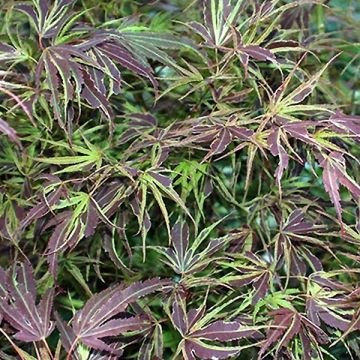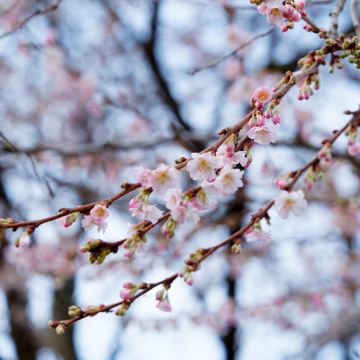

Acer palmatum Brown Sugar JWW7 - Japanese Maple


Acer palmatum Brown Sugar JWW7 - Japanese Maple
Acer palmatum Brown Sugar JWW7 - Japanese Maple
Acer palmatum Brown Sugar 'JWW7'
Japanese Maple, Palmate Maple
The parcel arrived very quickly the day after it was picked up by the delivery driver and within the dates I had requested, so well done. The maple tree is healthy and was planted 2 days after receiving it, the hellebore was a bit dry but after watering and cleaning the flowers and leaves, it perked up and had new flower buds. So I'm very satisfied, I ordered from Promesse de fleurs for the first time and I will do it again.
Elisabeth , 05/02/2024
Special offer!
Receive a €20 voucher for any order over €90 (excluding delivery costs, credit notes, and plastic-free options)!
1- Add your favorite plants to your cart.
2- Once you have reached €90, confirm your order (you can even choose the delivery date!).
3- As soon as your order is shipped, you will receive an email containing your voucher code, valid for 3 months (90 days).
Your voucher is unique and can only be used once, for any order with a minimum value of €20, excluding delivery costs.
Can be combined with other current offers, non-divisible and non-refundable.
Home or relay delivery (depending on size and destination)
Schedule delivery date,
and select date in basket
This plant carries a 24 months recovery warranty
More information
We guarantee the quality of our plants for a full growing cycle, and will replace at our expense any plant that fails to recover under normal climatic and planting conditions.

Would this plant suit my garden?
Set up your Plantfit profile →
Description
Acer palmatum Brown Sugar ('JWW7') is a delightful small Japanese Maple with delicately cut foliage, whose colour variations provide a permanent spectacle throughout the season. The young spring shoots have a reddish-brown colour reminiscent of chocolate, then gradually turn dark green in summer while new coloured shoots appear. In autumn, the foliage turns orange and then red, ending the season beautifully. Very hardy, this fairly compact variety can be grown in pots as well as in the garden, in moist soil with a slightly acidic tendency.
Native to eastern China, Korea, and Japan, Acer palmatum now belongs, like all maples, to the Sapindaceae family (formerly Aceraceae). This large family includes about 140 genera and nearly 2000 species, distributed worldwide. The most well-known, besides maples, are Horse Chestnuts (Aesculus), Koelreuteria, and Xanthoceras (which deserves to be more widely planted).
Acer palmatum, also called Japanese Maple because of its origin, has been cultivated in Japan for over 300 years, in gardens or trained as bonsai, inspiring a true cult among the Japanese. In nature, it is a small tree about 7 to 8m (23 to 26ft) tall, but can exceed 10m (33ft), with palmate leaves divided into 5 to 7 long and acuminate lobes, living in moist and slightly acidic soil. A favourite species among collectors, there are hundreds of horticultural varieties, proof of the enthusiasm for this plant, not only in Japan.
'Brown Sugar' offers changing foliage throughout the year. In spring, young leaves emerge with a chocolate to reddish-brown colour, deeply cut into 7 elongated and acuminate lobes (pointed at the tip), with toothed laminae. These characteristic leaves of the species are very decorative, with their easily recognisable appearance. As summer approaches, they turn into a dark green that further highlights their aesthetic shape, while a second flush appears, this time in shades of red, contrasting with the green of the first flush. In autumn, the foliage turns orange or red depending on the individual plants, thus ending the season beautifully. When the deciduous leaves have fallen in autumn, the red young branches are more noticeable. Discreet flowering takes place in May-June. The flowers, grouped in small clusters, sometimes produce fruits with recurved wings, called samaras, about 3cm (1in) long (the little helicopters that amuse children when they throw them in the air to see them spin).
This small Maple has a spreading bushy habit, marked by a rather slow growth rate, as in 10 years it will reach about 1.5m (5ft) in height and 1m (3ft) in width. As an adult, it rarely exceeds 2m (7ft) in height and 1.5m (5ft) in width, making it suitable for container cultivation to enhance a terrace. It should then be placed preferably to the east, so that it benefits from the morning sun but is sheltered from the afternoon sun. In the garden, in open ground, it will require a non-limestone soil (in which it would develop chlorosis), preferably slightly acidic but not too much. In neutral soil, it can be cultivated by digging a large hole and mixing slightly acidic planting compost (pH around 6) with the existing soil. In a small garden, it can be planted as a specimen on a lawn, but in a larger area, it is better to plant it in a bed. Very hardy, down to -20°C (-4°F) or even lower, it is not afraid of frost but rather of drought, both in the soil and in the atmosphere. Therefore, in hot climates, it will be prudent to plant it under the light shade of trees and water it regularly.
Brown Sugar will find its place in all gardens due to its small size. Decorative for much of the year with its beautiful foliage, it can be planted in a bed with other plants that share the same needs for moist, slightly acidic soil and filtered sunlight. Combine it with the superb Hamamelis, with winter flowering in yellow, orange, or purple. Camellias will also be perfect companions, and by choosing varieties from different groups, you can obtain splendid blooms spread throughout the year. And of course, add some Hydrangeas to your bed, such as Hydrangea macrophylla 'Blaumeise', a variety with flat heads of pink to blue flowers depending on the soil pH.
Report an error about the product description
Acer palmatum Brown Sugar JWW7 - Japanese Maple in pictures


Plant habit
Flowering
Foliage
Botanical data
Acer
palmatum
Brown Sugar 'JWW7'
Sapindaceae
Japanese Maple, Palmate Maple
Cultivar or hybrid
Other Japanese Maples
View all →Planting and care
Plant in spring or autumn in preferably light, humus-rich, neutral to acidic, deep, soft and well-drained soil, in a sunny but not scorching, semi-shaded or even shaded position, sheltered from cold and dry winds. The soil should be kept moist by mulching in summer, if necessary, especially when the plant is exposed to the sun, but should not be waterlogged in winter. Apply a significant amount of organic matter every 3 years to ensure a good humus content in the soil. Mulch if necessary, and water and mist the foliage on hot evenings. Winter pruning is limited to balancing the branches. Treat preventively against scale insects and Verticillium, a fungal disease that occurs in heavy and overly moist soil.
Planting period
Intended location
Care
-
, onOrder confirmed
Reply from on Promesse de fleurs
Similar products
Haven't found what you were looking for?
Hardiness is the lowest winter temperature a plant can endure without suffering serious damage or even dying. However, hardiness is affected by location (a sheltered area, such as a patio), protection (winter cover) and soil type (hardiness is improved by well-drained soil).

Photo Sharing Terms & Conditions
In order to encourage gardeners to interact and share their experiences, Promesse de fleurs offers various media enabling content to be uploaded onto its Site - in particular via the ‘Photo sharing’ module.
The User agrees to refrain from:
- Posting any content that is illegal, prejudicial, insulting, racist, inciteful to hatred, revisionist, contrary to public decency, that infringes on privacy or on the privacy rights of third parties, in particular the publicity rights of persons and goods, intellectual property rights, or the right to privacy.
- Submitting content on behalf of a third party;
- Impersonate the identity of a third party and/or publish any personal information about a third party;
In general, the User undertakes to refrain from any unethical behaviour.
All Content (in particular text, comments, files, images, photos, videos, creative works, etc.), which may be subject to property or intellectual property rights, image or other private rights, shall remain the property of the User, subject to the limited rights granted by the terms of the licence granted by Promesse de fleurs as stated below. Users are at liberty to publish or not to publish such Content on the Site, notably via the ‘Photo Sharing’ facility, and accept that this Content shall be made public and freely accessible, notably on the Internet.
Users further acknowledge, undertake to have ,and guarantee that they hold all necessary rights and permissions to publish such material on the Site, in particular with regard to the legislation in force pertaining to any privacy, property, intellectual property, image, or contractual rights, or rights of any other nature. By publishing such Content on the Site, Users acknowledge accepting full liability as publishers of the Content within the meaning of the law, and grant Promesse de fleurs, free of charge, an inclusive, worldwide licence for the said Content for the entire duration of its publication, including all reproduction, representation, up/downloading, displaying, performing, transmission, and storage rights.
Users also grant permission for their name to be linked to the Content and accept that this link may not always be made available.
By engaging in posting material, Users consent to their Content becoming automatically accessible on the Internet, in particular on other sites and/or blogs and/or web pages of the Promesse de fleurs site, including in particular social pages and the Promesse de fleurs catalogue.
Users may secure the removal of entrusted content free of charge by issuing a simple request via our contact form.
The flowering period indicated on our website applies to countries and regions located in USDA zone 8 (France, the United Kingdom, Ireland, the Netherlands, etc.)
It will vary according to where you live:
- In zones 9 to 10 (Italy, Spain, Greece, etc.), flowering will occur about 2 to 4 weeks earlier.
- In zones 6 to 7 (Germany, Poland, Slovenia, and lower mountainous regions), flowering will be delayed by 2 to 3 weeks.
- In zone 5 (Central Europe, Scandinavia), blooming will be delayed by 3 to 5 weeks.
In temperate climates, pruning of spring-flowering shrubs (forsythia, spireas, etc.) should be done just after flowering.
Pruning of summer-flowering shrubs (Indian Lilac, Perovskia, etc.) can be done in winter or spring.
In cold regions as well as with frost-sensitive plants, avoid pruning too early when severe frosts may still occur.
The planting period indicated on our website applies to countries and regions located in USDA zone 8 (France, United Kingdom, Ireland, Netherlands).
It will vary according to where you live:
- In Mediterranean zones (Marseille, Madrid, Milan, etc.), autumn and winter are the best planting periods.
- In continental zones (Strasbourg, Munich, Vienna, etc.), delay planting by 2 to 3 weeks in spring and bring it forward by 2 to 4 weeks in autumn.
- In mountainous regions (the Alps, Pyrenees, Carpathians, etc.), it is best to plant in late spring (May-June) or late summer (August-September).
The harvesting period indicated on our website applies to countries and regions in USDA zone 8 (France, England, Ireland, the Netherlands).
In colder areas (Scandinavia, Poland, Austria...) fruit and vegetable harvests are likely to be delayed by 3-4 weeks.
In warmer areas (Italy, Spain, Greece, etc.), harvesting will probably take place earlier, depending on weather conditions.
The sowing periods indicated on our website apply to countries and regions within USDA Zone 8 (France, UK, Ireland, Netherlands).
In colder areas (Scandinavia, Poland, Austria...), delay any outdoor sowing by 3-4 weeks, or sow under glass.
In warmer climes (Italy, Spain, Greece, etc.), bring outdoor sowing forward by a few weeks.


















































